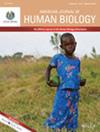Nutritional Status and Somatotype of School-Aged Youth (5–17 Years) Residing at Moderate Altitude in the Ambato Department of Catamarca Province, Argentina
Abstract
Objectives
To analyze the somatotype and its relationship with nutritional status, determined by Body Mass Index (BMI), in populations from moderate altitude in the province of Catamarca, Argentina.
Methods
A cross-sectional descriptive study was conducted on 139 schoolchildren aged 5–17 years (51.79% girls) from the rural localities of Las Juntas and Las Piedras Blancas (1609 m above sea level), Ambato Department, Catamarca province. Anthropometric measurements were taken to calculate BMI and the three somatotype components: endomorphy, mesomorphy, and ectomorphy, according to Heath and Carter. Participants were classified based on WHO categories: underweight, normal weight, overweight, and obesity.
Results
Overweight was observed in 16.5% of the participants. Obesity (7.5%) was present only in boys. The average somatotype profile was 3.9–2.5–2.2, indicating moderate adiposity, low musculoskeletal development, and relative linearity. Regression analysis showed that BMI increased with the first two components and decreased with the third. Differences in somatotype distribution by sex and age were observed, along with low concordance between obesity categories (BMI) and high endomorphy. Boys tended to exhibit more mesomorphic somatotypes, while girls showed predominantly endomorphic somatotypes as BMI increased.
Conclusions
The analyzed population of children and adolescents showed a predominantly endomorphic somatotype with a low prevalence of obesity. The low concordance between nutritional status (BMI) and somatotype highlights the need for complementary criteria to evaluate body composition.

 求助内容:
求助内容: 应助结果提醒方式:
应助结果提醒方式:


